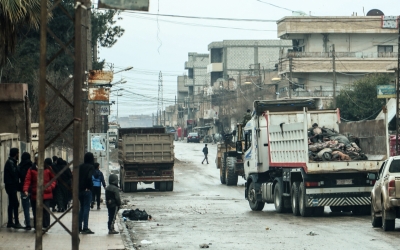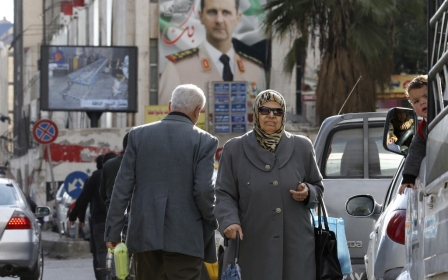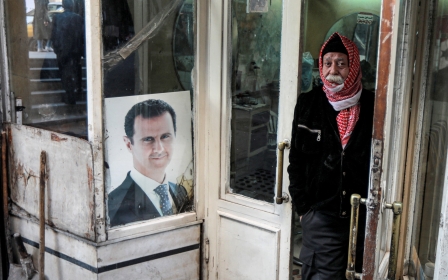Syria: Women and children from same family killed in Assad government shelling of Idlib
Syrian government shelling killed at least six civilians including women and children on Saturday in Idlib province, the country's last main rebel bastion, a war monitor and witnesses have said.
At the scene of the attack, a Middle East Eye correspondent reported seeing several bodies being taken away from the targeted home in Maarat al-Naasan, an area close to Damascus-controlled territory.
New MEE newsletter: Jerusalem Dispatch
Sign up to get the latest insights and analysis on Israel-Palestine, alongside Turkey Unpacked and other MEE newsletters
According to the Syrian Civil Defence, also known as the White Helmets, three artillery shells were fired toward the town from the nearby forest of Kafr Halab.
"The fires was shot directly to target a residential house" said Laith Al-Adbullah, a manager of one of the civil defence centres. "The goal of the attack was to actually kill civilians, as the Syrian regime regularly bombards civilian city centres and villages".
The Syrian Observatory for Human Rights, a Britain-based group with a network of sources on the ground in the war-torn country, confirmed that a family home was directly hit. "The shell fell on a civilian home," the group said in a statement on Saturday.
The monitor said two women and two children were among those killed, who were all from the same family. Many others were wounded.
The slain family members were lined up next to each other and laid to rest in the town's community cemetery later that day.
Mustafa Ukab, a relative of the victims in Saturday's bombing, said that the slain family had gathered at the house - his uncle's - to enjoy the sunny weather that had ended a weeks-long cold front.
Ukab left for work that morning but hurried back when he heard that the nearby explosion he'd heard had hit his uncle's neighbourhood.
"I could barely walk, and my feet couldn't support me to get there fast enough,” Ukab told MEE. "I rushed to the house and I found my uncle Fawaz, his wife and his four-year-old daughter Jana, all killed in the attack."
Three other members of Ukab family that were killed have been identified as Emad, Aisha and a two-year-old named Rahaf.
The shelling had begun at around 1:30 local time, with more shells fired intermittently afterward.
The Syrian government and its ally Russia have regularly targeted hospitals and civilian areas since the start of the war in 2011, according to the Observatory.
The Idlib region bordering Turkey is home to about three million people and it is one of the last pockets to oppose Damascus.
Hayat Tahrir al-Sham, a former Syrian branch of al-Qaeda, controls with its allies about half of the region and parts of neighbouring provinces.
After a months-long military campaign to flush out the enclave sparked fears of the war's worst bloodshed yet, a ceasefire deal was reached in March 2020.
The agreement brokered by Damascus and the rebels' main backers - Russia and Turkey respectively - has largely held since, despite sporadic flare-ups.
But Damascus has intensified attacks on southern Idlib since June.
The war in Syria has killed around half a million people and displaced millions more, the Observatory says.
Middle East Eye delivers independent and unrivalled coverage and analysis of the Middle East, North Africa and beyond. To learn more about republishing this content and the associated fees, please fill out this form. More about MEE can be found here.





